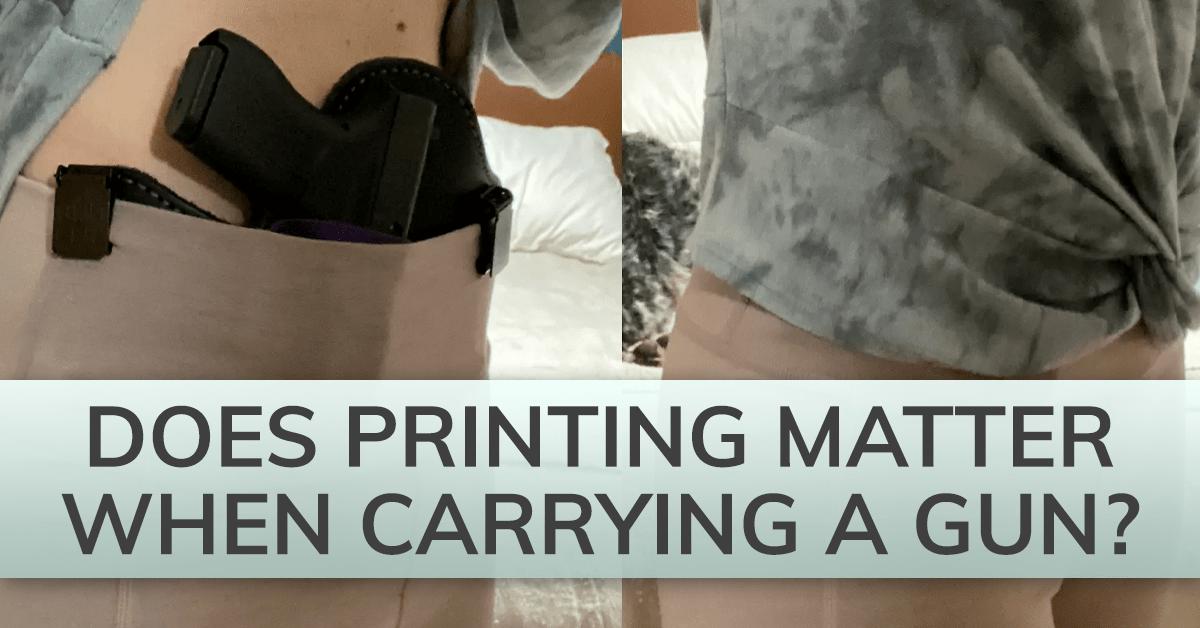Your Cart is Empty
Orders Over $100 Ship FREE (USA)!
Orders Over $100 Ship FREE (USA)!
CONCEALED CARRY
(Apparel with holster pockets or concealed-carry features)
(Apparel with holster pockets or concealed-carry features)
PARTS & GEAR
RANGE STYLE
Gift shopping & not sure about size or style? Give a gift card instead!
Gift shopping & not sure about size or style? Give a gift card instead!
GIFT IDEAS
The entire site is full of products that make great gifts, so browse all of our collections! Still not sure? Give a gift card!
The entire site is full of products that make great gifts, so browse all of our collections! Still not sure? Give a gift card!
EXPLORE
5 Common Holster Mistakes (and How to Fix Them)
4 min read
Here's the truth: choosing the right holster is as crucial as picking the right firearm. A good holster does more than just hold your firearm securely - it makes sure you can draw it quickly and dependably when you need it. Sadly, a lot of folks run into problems when picking out or using holsters, which can lead to safety concerns and gear that doesn't work as well as it should. To keep you from falling into these common traps, we’ve put together a list of some of the most common holster mistakes, along with simple fixes. Here’s how you can dodge these blunders and feel more secure about your holster setup.
Compromising on Holster Quality for Price
We know it's tempting to go for cheaper holster options to save money. The big problem with this is it almost always leads to compromises in quality, safety, and durability - all things you don’t want when your life depends on it! Low-quality holsters can wear out quickly, lose shape, or fail to provide adequate retention, which can pose some serious safety risks.
The solution: Invest in a high-quality holster from a reputable manufacturer, even if it costs a bit more. Quality holsters are constructed with better, stronger materials and have superior design features that enhance safety and longevity. Consider it an investment in your safety and the reliability of your carrying setup.
Overlooking the Draw Angle
Many firearm owners overlook the draw angle when picking out a holster, but it's a big deal. The angle at which your gun sits can really affect how fast and smoothly you can draw it. If it's not correct, it could make drawing your gun awkward and slow, which isn't what you want if you have to draw your gun in a self-defense situation or while you're on the clock in a competition.
The solution: Before you buy a holster, think about the most natural way you reach for your gun. Look for holsters that let you adjust the tilt (called the cant) and how high or low it sits (the ride height). Being able to tweak these settings means you can tailor your holster to fit just right, making your draw quicker and more natural.
Not Considering Your Concealment Needs
People sometimes choose holsters without thinking through their specific concealment requirements. This can lead to purchasing a holster that doesn’t conceal properly, or prints too obviously through clothing, which defeats the purpose of carrying concealed.
The solution: Think about where on your body you plan to wear the holster and what types of clothing you typically wear. Inside-the-waistband (IWB) holsters are excellent for concealment under a t-shirt or jacket, while outside-the-waistband (OWB) holsters will work better with a looser shirt or jacket. Test different positions and holster types to find the best concealment solution for you.
It’s easy to overlook, but the right belt and clothes are key to keeping your holster secure. If your holster isn’t matched with the right gear, it might shift or loosen up, which is a real hassle and can mess with your comfort and safety. This kind of slip-up can make it tough to get to your firearm when you really need it. The solution: Make sure your holster is compatible with what you’re wearing, especially your belt. Opt for a belt that’s specifically made for carrying firearms - they're designed to be stiffer and hold up better than your average belt. Check that the holster clips or loops really grip your belt's width and thickness.
For clothing, consider the fit and how it complements the holster. For example, if you’re going to wear an underlayer, more form-fitting shirts may work better with an IWB holster and prevent shifting. If you’re using clothing as a cover garment, choose styles that drape well and are loose enough to conceal your firearm without printing. Opt for materials that offer flexibility and movement without compromising the holster's stability.
Ignoring Proper Holster Maintenance
Just like any gear you rely on, your holster needs a little TLC to keep doing its job right. If you skip out on regular maintenance, you might find it wearing out too soon, not working as well, or even causing a dangerous situation if it fails when you need it most.
The solution: Make it a habit to keep up with your holster’s maintenance, no matter what it's made from. If you've got a leather holster, treat it with the right leather care products to keep it flexible and crack-free. For Kydex and other synthetic holsters, a quick wipe with a clean cloth and a wash with some mild soap and water does the trick to keep grime and dirt at bay.
Always keep an eye out for any signs of wear like loose stitches, worn out retention systems, or out-of-shape holsters and replace them as soon as you spot an issue that can’t be fixed. Staying on top of this not only keeps your holster in great shape but also ensures it’s safe and reliable for longer.
Not Regularly Practicing With Your Holster
If you're not spending time practicing with your holster, you could be setting yourself up for trouble. It's one thing to carry a firearm, but being able to draw it smoothly and safely under pressure is a whole other ballgame. Without regular practice, you might fumble during a critical moment, which could be dangerous.
The solution: Make it a point to regularly train with your holster. Carve out some time each week to practice your drawing technique in various positions and while wearing different outfits (dry fire practice is perfect for this!). That way, if you ever need to draw your firearm in a pinch, you'll be ready to do so effectively and safely. Plus, the regular practice will help you get a real sense of how your holster holds up day-to-day, letting you to spot any issues before they turn into real problems.
Also in All About Holsters: Problem-Solving

Does Printing Matter When Carrying a Gun?
3 min read
When you first start carrying concealed, it's normal to have issues with printing. Here are some tips to reduce printing and curb your anxieties about it.
Read More